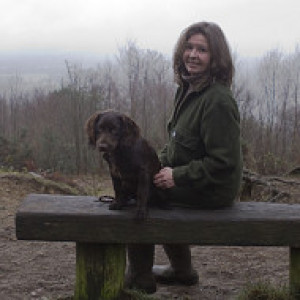Magical Woodlands
I did a tour of the Bluebell woods this morning. The Bluebells aren't as spectacular as they were last year. They may improve a little this week but on White Down most were in full bloom. There has been a great deal of forestry work over the past few years. The heavy machinery is not kind to the ancient woodland floor and opening the canopy gives room for more invasive species to take hold.
Hyacinthoides non-scripta is our native plant, protected by law, which has nodding racemes of dark flowers to one side of it's stalk, long curved petals and white pollen.
The Spanish invaders, H. hispanica has paler flowers produced on all sides of the upright stem and blue pollen. They are the most frequently planted bluebell in gardens, escaping into the wild as seed or discarded bulbs.
Unfortunately both of the above hybridise to produce a plant, H x massartiana, which is a real threat to the native population. If you have Spanish bluebells growing in the garden, consider ripping them out, especially if you live near a blue bell wood!
Previously called Endymion non scripta, the Blue bell was associated with a mythological shepherd boy Endymion. The moon goddess Seline fell in love with him and cast an eternal sleep on him so that only she could enjoy his beauty.
Bluebells are strongly associated with fairies who ring these tiny bells to summon their people to the fairy conventions in the woods. The fairies are protective of their bells, and cast spells on anyone who damages or picks them. It is considered unlucky to walk through bluebells or to bring them into your home.
Some sources say malignant fairies use the bluebells to trap children and passers by. There is a particular recipe, made from the sap of bluebells, which is sipped, under the full moon, to enable mortals to see into the world of fairies.
The more realistic facts are that the Bluebell is not edible. The name nonscripta means unwritten and refers to the absence of a little horseshoe mark that you can find inside the flowers other hyacinth species.
A glue is obtained from the sap in the bulb and stem. Simply cut open a bulb and apply the sap to whatever needs to be joined. It makes an excellent paper glue, the join is stronger than the surrounding paper. It won't work on non-absorbent materials such as plastics and glass.
A starch, extracted from the bulb was used in laundering, but it's very harsh on the skin.
Well, I prefer to think they are magical, as are the woodlands, right now!

Comments
Sign in or get an account to comment.


